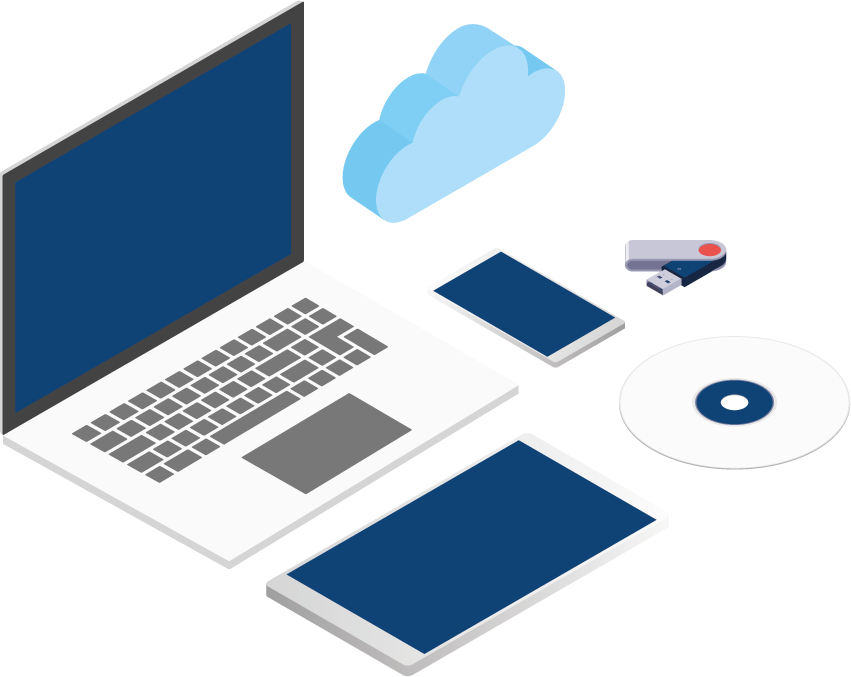PDF, print, video tutorials, mobile apps, augmented Reality...
Perhaps you too get the feeling that the world is becoming increasingly complex. You're not wrong as far as usage habits with respect to technical documentation are concerned. Thirty years ago, customers were happy when their device came with a user manual in the form of a hectographed script; later, they wanted professionally printed instructions, then a PDF, then instructions in HTML 5 and, of course, the whole thing in the form of data in the online store too.
And now? Now, there's virtually everything. Video instructions, mobile applications, augmented reality… but PDF or printed documents are still required for legal reasons. The world of technical documentation is in fact becoming more and more complex.
Fortunately, there are things to make technical writing easier, such as a component content management system (CCMS) like SCHEMA ST4.
Did you already know...?
Sometimes it's the editing software that determines the format, e.g., Word, FrameMaker, or InDesign files. Sometimes the tools remain the same but the versions change. Sometimes the format is decided by the target platform, e.g., HTML for Internet applications. Sometimes the complexity stems from different display tools, such as HTML code for different browsers or for mobile devices.
If you consider technical documentation from the point of view of target formats, then there's a bewildering array of different options. However, in almost all cases, these many different formats are based on XML. In other words, almost any target format can be created from a properly defined XML if the right work steps are followed.
What makes target formats in technical documentation so complicated?
There are two main reasons why target formats are challenging in technical documentation:
- Often, one target format is insufficient for technical documentation, as multi-channel strategies have become the norm. This means the same user manual should be available to users on a variety of channels, e.g., in printed, digital, online, and mobile format, as preferences differ depending on the usage situation.
- Even if the full instructions for use are not going to be created in multiple target formats, sometimes variants and parts of the same instructions are required in other target formats, e.g., the product overview for the online shop or a fault table for the risk manual.

SCHEMA ST4 splits content into individual modules that it manages in a media-neutral way as XML data. This has two advantages:
- The modules can be combined and reused in any way desired.
- The media-independent modules can be turned into any number of output formats.
This works by using the document description language XML, which forms the basis of all modern target formats (e.g., Word, HTML5, InDesign, etc.). Similar to layouts, the output mechanism for a target format only needs to be defined once and it can then be used for any content.
SCHEMA ST4 provides various mechanisms to make creating target formats easier. Some standard formats are already available as soon as you've installed the software. These can be configured in software modules for layout and online development. It's also possible to create entirely new target formats, especially if they are XML-based. What's more, SCHEMA ST4 features a number of analysis and reporting functions that make it easier for the user to maintain an overview of the target formats used and carry out automated quality control on the output.
Our XML-based component content management system SCHEMA ST4 equips you with the ideal tools to deal with any future target format needs. Whether you want to modify an existing output for a target format, there are new versions of target formats available, or you need completely new target formats – by separating layout, structure, and content, you have a multitude of options at your fingertips. Storing data in XML format ensures that even future target formats can be created using SCHEMA ST4, since XML is the basic technology behind all modern target formats.
- A selection of different output formats in the publication wizard:
⇒ Print-formats (Word, PDF, FrameMaker, InDesign)
⇒ Web-formats (HTML, HTML Help)
⇒ Special formats (e.g., iiRDS-compliant HTML for portals or customer-specific XML formats like DITA for uploading data to third-party systems) - Combination of a format and different layouts (standard + customer-specific)
- Reuse of layouts for publications of a format (adherence to the corporate design)
- Customer-specific adaptation and advanced options for formats in the layout tools (e.g., use of the CI color chart or JavaScript for features)
- Creation of new formats in the layout tools (in the past, e.g., ebook, JavaHelp, EclipseHelp)



